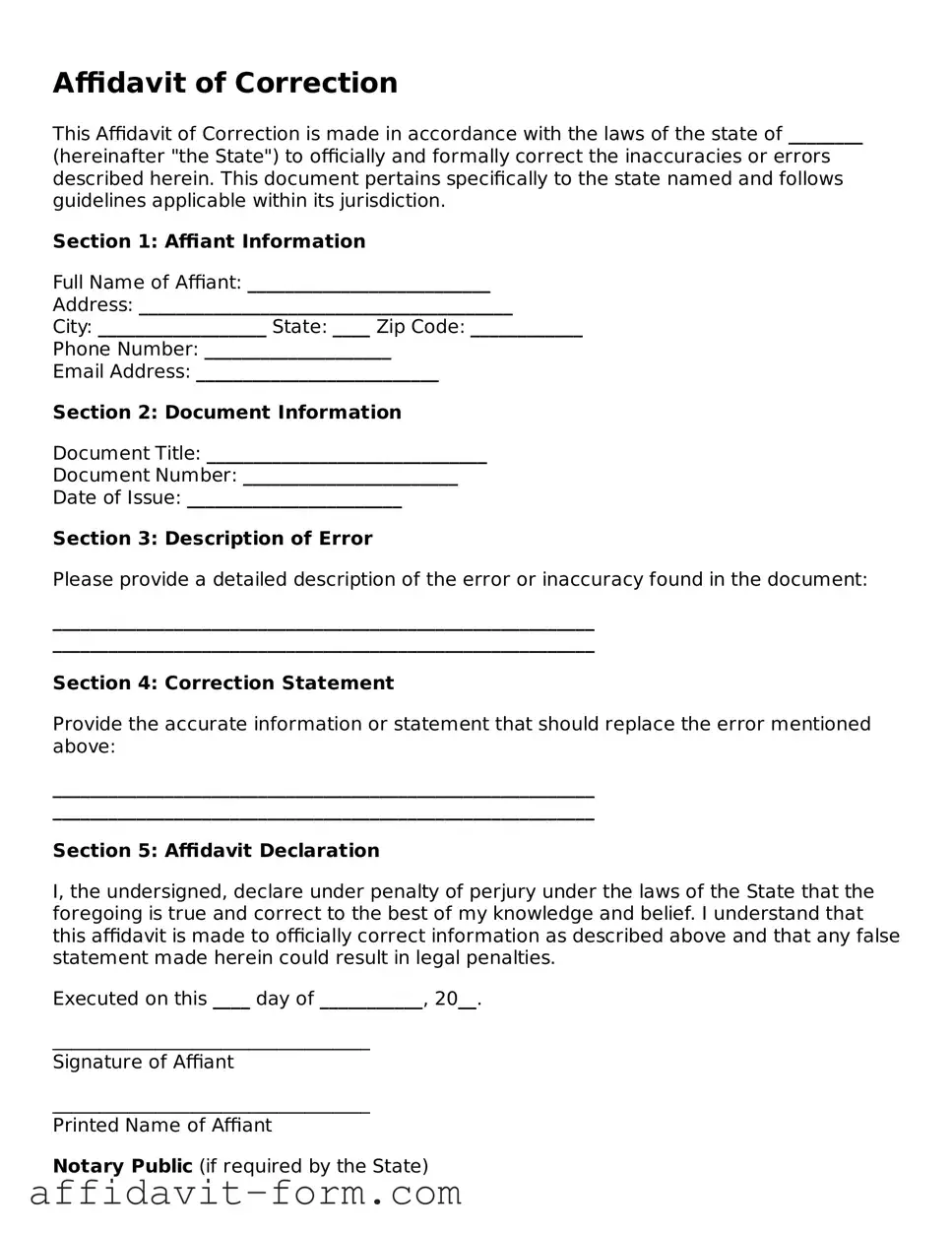Affidavit of Correction
This Affidavit of Correction is made in accordance with the laws of the state of ________ (hereinafter "the State") to officially and formally correct the inaccuracies or errors described herein. This document pertains specifically to the state named and follows guidelines applicable within its jurisdiction.
Section 1: Affiant Information
Full Name of Affiant: __________________________
Address: ________________________________________
City: __________________ State: ____ Zip Code: ____________
Phone Number: ____________________
Email Address: __________________________
Section 2: Document Information
Document Title: ______________________________
Document Number: _______________________
Date of Issue: _______________________
Section 3: Description of Error
Please provide a detailed description of the error or inaccuracy found in the document:
__________________________________________________________
__________________________________________________________
Section 4: Correction Statement
Provide the accurate information or statement that should replace the error mentioned above:
__________________________________________________________
__________________________________________________________
Section 5: Affidavit Declaration
I, the undersigned, declare under penalty of perjury under the laws of the State that the foregoing is true and correct to the best of my knowledge and belief. I understand that this affidavit is made to officially correct information as described above and that any false statement made herein could result in legal penalties.
Executed on this ____ day of ___________, 20__.
__________________________________
Signature of Affiant
__________________________________
Printed Name of Affiant
Notary Public (if required by the State)
State of ____________________
County of ____________________
On this ____ day of ___________, 20__, before me, ______________________(name of notary), personally appeared ______________________(name of affiant), known to me (or satisfactorily proven) to be the person whose name is subscribed to the within instrument, and acknowledged that he/she executed the same for the purposes therein contained.
In witness whereof, I hereunto set my hand and official seal.
__________________________________
Signature of Notary Public
My Commission Expires: ______________________
